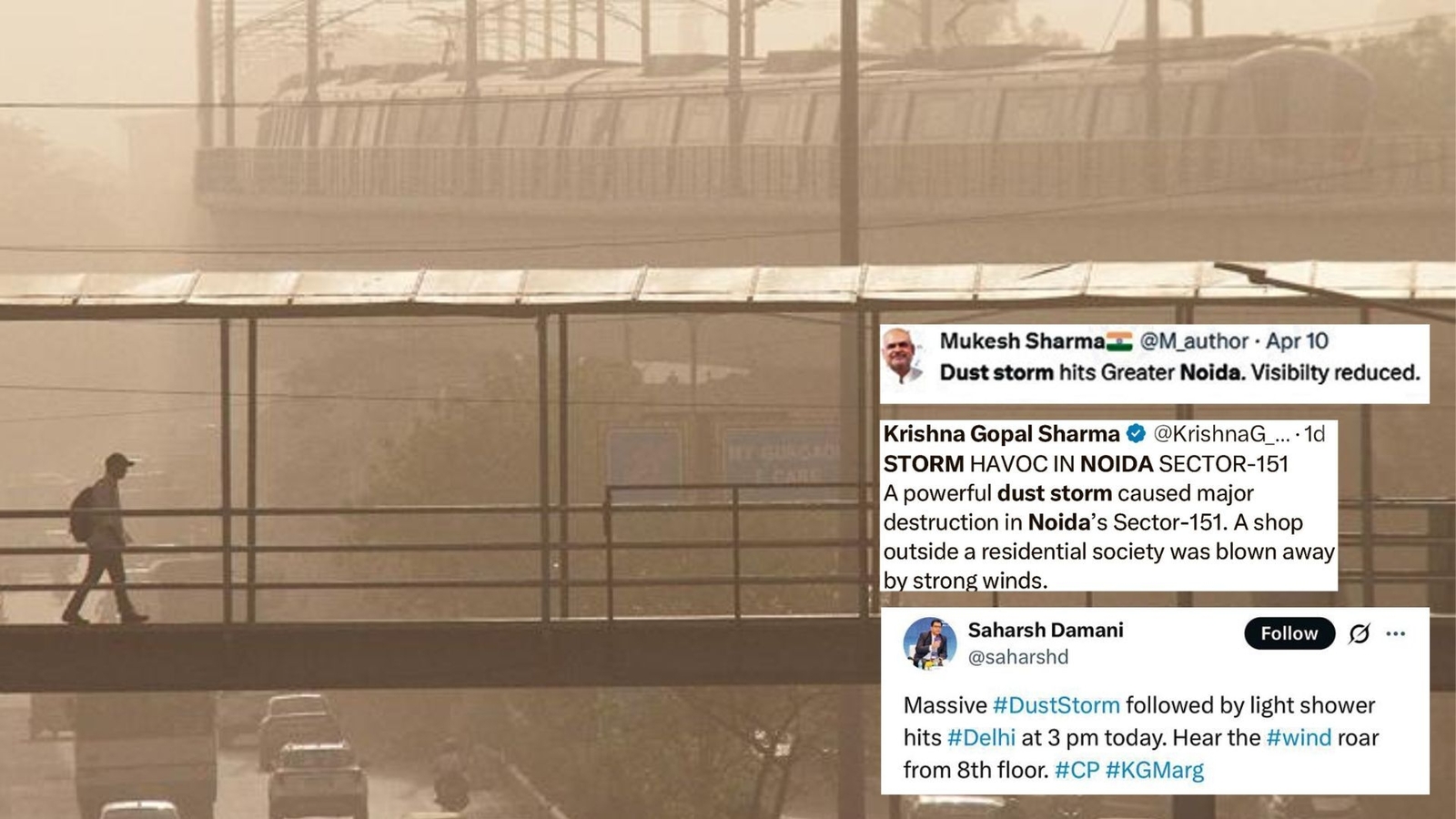Delhi’s Air Quality Plummets as Dust Storms Strike: Essential Tips to Stay Safe Amid GRAP-I Return
May 19, 2025 06:00 PM IST
Delhi’s Air Quality Index (AQI) has once again dipped into ‘poor’ category and GRAP-I has returned. Here’s how to counter the sudden surge in dust storms in NCR
In a distressing turn of events, Delhi’s Air Quality Index (AQI) has once again dropped into the ‘poor’ category, triggering the return of the Graded Response Action Plan (GRAP-I). This comes on the heels of an alarming increase in dust storms across the National Capital Region (NCR). Recently, heavy winds have swept through the city, leading to significant discomfort among residents and raising concerns over public health and safety.
The Onslaught of Dust Storms
In the words of Noida resident Ronil Joshi, “The dust storm on Sunday was so intense, it flung open our latched windows. The wind shattered the windowpane and despite covering everything, the dust settled everywhere.” Such first-hand accounts highlight the severe impact of these weather phenomena, with respiratory problems becoming more prevalent, especially among children.
Health Risks and Precautions
As dust storms disrupt daily life in Delhi, health experts are urging caution. Dr. Nikhil Modi, a pulmonologist based in the capital, warns that exposure to dust can lead to serious health risks, such as:
- Respiratory issues including coughing and breathing difficulties
- Sinus problems and headaches
According to Dr. Modi, “It’s best to stay indoors during dusty weather, but if you must go out, wear a face mask and protective eyewear. At the first sign of irritation—such as breathlessness or coughing—rinse your eyes with clean water and inhale steam to help clear out the dust particles.” His advice to drink warm fluids like ginger-honey tea also emphasizes the need for a holistic approach to health during these turbulent times.
Safety Measures During Dust Storms
For those navigating life in North India’s volatile climate, staying safe during dust storms is paramount. Here are some essential safety tips to keep in mind:
- Remain indoors during heavy dust or wind, preferably in a room without windows.
- Keep balconies and external doors shut to prevent strong winds from causing damage.
- Secure windows with tape to ensure they remain locked during storms.
- In emergencies, contact the fire department at 101 or dial 112 for general assistance.
– Inputs by Atul Garg, director, Delhi Fire Services
The Return of GRAP-I
The imposition of GRAP-I signifies an urgent need for action amidst deteriorating air quality. This plan aims to mitigate pollution levels through measures such as the closure of construction sites and managing vehicular emissions. Delhi’s experience isn’t an isolated case; various cities in India are grappling with similar weather extremes, exacerbating preexisting environmental challenges.
The Bigger Picture
While localized actions like GRAP-I can provide immediate relief, a more systemic approach is needed for long-term solutions. Addressing the root causes of dust storms—which includes deforestation, urban construction, and climate change—is vital for securing a sustainable future for urban ecosystems. Citizens also play an essential role by advocating for greener practices and ensuring that local government policies prioritize environmental health.
Conclusion
As Delhi grapples with the dual challenges of rising dust storms and poor air quality, the focus should be on both immediate safety and long-term environmental stewardship. Parents, healthcare professionals, and local authorities must come together to protect the vulnerable populations, particularly children, from the adverse impacts of these natural occurrences while pushing for policy changes that promote sustainable urban living. Only by fostering community resilience can we hope to navigate such unpredictable weather patterns effectively.






